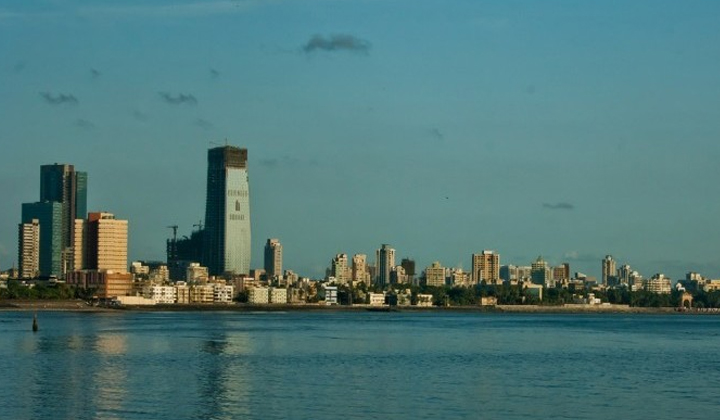Trending Now
- Action should be taken against the cops who protect the Ganja accused in TN : PMK leader Anbumani Ramdoss
- Votes that go to Congress or INDI alliance is a waste : PM Modi
- Court grants one-day custody to police to investigate Youtuber Savukku Shankar.
- We actually got our independence only in 2014. The independence to change this country as it should be : Actor , politician, Kangana Ranaut
Real Estate
The real estate cup is half full, not half empty
![]() January 17, 2016
January 17, 2016
E Jayashree Kurup
The Year 2015 has been a watershed year for the Indian real estate sector. I would say it is one that ended on a high. I may get flak for this statement as there are many elements that make people believe it has been a disastrous year for the real estate industry.
Consider the Cons
Sales have dropped to a trickle. Developers are saddled with huge inventory of completed stock. Consumers expect prices to drop while industry feels two-year stable values indexed to inflation and rising input costs mean a discount. Some sellers are forced to exit at rates that they purchased at or even at a small discount as the holding costs are becoming difficult to bear. Key regulatory issues have been entangled in political turmoil and not been tabled in Parliament.
Consider the Pros
So what makes me think that the real estate cup is half full and not half empty? Consider the magnitude of the pros. The first dedicated property channel in the country, Magicbricks Now was launched. With a huge amount of consolidated absorption, it has been one of the best years for commercial real estate. The government has finally publicly declared various flagship programmes such as Smart Cities, Affordable Housing and Housing for All. Government has declared a highway completion run rate of 6-km per day, something that has not been met for a while now. The volume of consumer searches for houses on Magicbricks.com has gone up by about 30 per cent with an enhanced engagement of 30 per cent as well.
So are there more pros or cons?
I would still like to think of the cup as half full rather than half empty.
I would say the most impactful change of 2015 is the Coming of Age of the Indian real estate consumer. Enhanced engagement from end users reflects the new maturity and confidence with which consumers are approaching home buying. No longer is the consumer at the mercy of markets. The consumer is finally calling the shots. The issues being debated are not only whether they should buy but also what is the quality of product the developer is offering, including the liveability and infrastructure back-ups that are made available.
Online forums such as the Magicbricks Forum have become a means of active debate with those you don’t even know personally. Online research on platforms like Advice has also gone up significantly indicating the consumers are now using data to take informed decisions. From a digital initiative, the information disbursing has now also become electronic with daily expert sessions both online and on television.
Smart Cities
Consumer confidence also comes from the fact that with the announcement of initiatives like the Smart Cities, it is okay to ask for good roads, working services and quality of life. This is at the root of the confidence that the real estate consumer is exuding. At the National Workshop on Affordable Housing and Habitat Policies M Venkaiah Naidu, Union Minister of Urban Development, Housing and Urban Poverty Alleviation, took the Prime Minister’s vision of ‘enhancing ease of doing business’ to the housing sector in the context of the launch of Housing for All Mission.
The Minister urged the states to consider waiving or reducing stamp duty, registration fees, land conversion fee and other such duties to promote affordable housing projects. He said that Affordable Housing and Habitat Policies of states should focus on:
Evolving state specific models since one-size-fits-all policy does not work
Affordable housing as a part of the larger eco-system (habitat)
Ensuring required social and physical infrastructure connectivity
Providing linkages with transportation and livelihoods
Promoting private sector investments in a big way
Availability of land and finance, and
Promotion of appropriate cost effective and sustainable construction technologies
He referred to the four rounds of meetings with Ministers of Finance, Defence, Culture, Civil Aviation, Environment and Forests & Climate Change and respective secretaries held so far towards speedy clearances for construction projects. This will culminate in faster approvals within two months. If the approvals do not come within this time, the construction process can begin.
The Minister said that within 4 months of the launch of Prime Minister’s Awas Yojana (PMAY), 20 states have identified 989 cities for taking up housing projects for urban poor. He also informed that 140 lending agencies have signed Memorandums of Understanding (MoU) with Central Nodal Agencies like National Housing Bank and Housing and Urban Development Corporation (HUDCO) for extending financial support to housing projects under Credit Linked Subsidy component of the urban housing mission. These agencies include: 54 Scheduled Commercial Banks, 63 Housing Finance Corporations, 16 Regional Rural Banks and 7 Cooperative Banks.
Naidu expressed hope that with the initiatives of the central government including interest subsidy of an unprecedented 6.50 per cent on housing loans, the mission will succeed in building 2 crore houses in urban areas by the year 2022.
Since the launch of the new urban initiatives by the central government, there has been a new awakening among the people in urban areas and a new consciousness among urban local bodies in their approach towards urban governance. Naidu noted that 85 urban local bodies have developed their own websites and 30 have launched Facebook pages besides being active on MyGov.in to enlist ideas from citizens for formulation of smart city plans. “This is clearly a leap forward on the part of the urban local bodies which were known for their isolated, insulated, non-responsive, non-interactive and non-citizen friendly governance till recently” he said.
What does it take to give a fillip to the real estate market? Magicbricks recently concluded real estate dialogues 2015 across 6 cities in the country.
Few things that policy makers can do to bump up real estate transactions:
1) Transparency
2) Speed of approvals
3) Infrastructure creation
What should the consumer look at?
1) Track record of the developer
2) Quality of houses
3) Check the specifications promised with the delivery
4) Benchmark prices at locality level
5) Builder and project ratings
How does the consumer respond to special offers?
1) Pricing is important
2) Go for tangible discounts
3) Do site visits
4) Buy near economic hubs for rental returns
Consumers are end users today and are buying either for current or future use. After a roller coaster ride from 2008 to 2015, the year 2016 seems a benchmark in policies, consumer activism and also positioning of property as an investment asset. Benchmarks are being evolved and delays are not condoned. Returns on real estate investment are being meticulously computed. The cup is definitely half full.
























